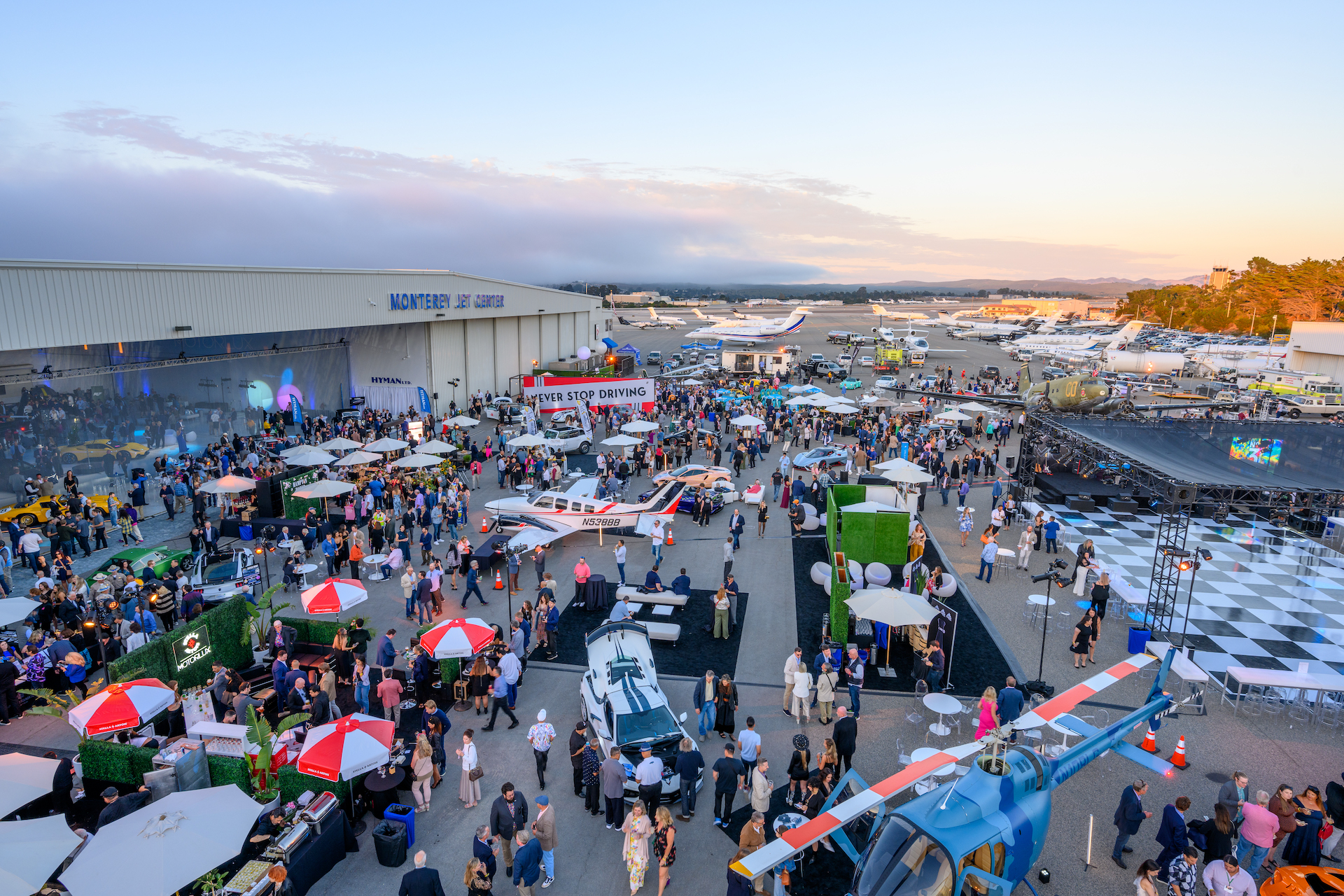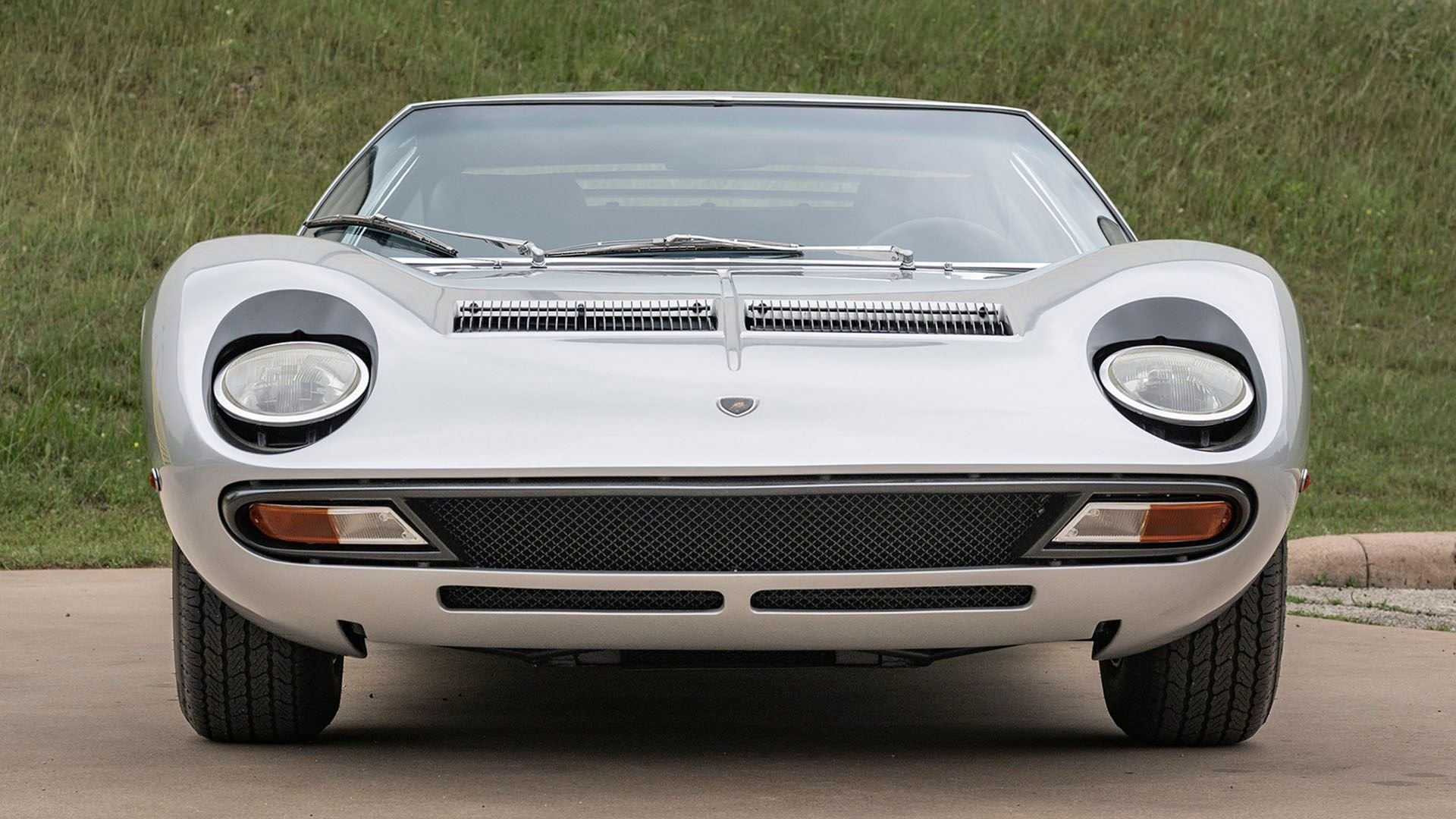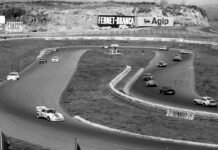The Monterey Jet Center auction will return again as a two-day sale this coming August. Held in conjunction with Hagerty’s Motorlux event, thousands of guests will be in attendance once again across the two events. The upcoming 2024 auction will feature approximately 150 exceptional motor cars within the grounds of the Monterey Jet Center kicking off Monterey Car Week in grand style.

Should you be interested in offering your collector car to this esteemed auction, please contact a member of the Broad Arrow team today.
1938 Talbot-Lago T150 C Lago Spéciale Teardrop Coupé by Figoni et Falaschi

Estimate: $6,500,000 – $8,500,000
When Anthony Lago went to Suresnes in September 1933 to salvage Automobiles Talbot-Darracq, he took on a company with massive financial problems and a rather ho-hum range of cars. The mechanical legacy left by his predecessor Owen Clegg and chief engineer Walter Becchia was staid and pedestrian. The nicest thing that could be said about the cars was that they did no one any harm.

Sporty, stylish or chic, they definitely were not. In addition, models had been allowed to proliferate needlessly: too many engine sizes were served up in a bewildering number of chassis lengths and body styles, none of which were selling.
One could say that while Talbot could produce a car for every occasion, there was unfortunately not an occasion for every car. Something needed to be done, and quickly… . Find out more

2003 Ferrari Enzo

Estimate:$4,500,000 – $5,000,000
Every so often, Ferrari has graced the automotive world with a new ultra-limited creation designed to showcase the latest Formula One technology in a production road car, each representing the state of the art at the time of their release. In the 1980s, Maranello engineers demonstrated the benefits of turbocharging with the pioneering performance of the homologation Ferrari 288 GTO, later utilizing the program to develop a new 40th-anniversary road car, the legendary Ferrari F40.

The 1990s saw Formula One teams make giant leaps forward in technology with such advancements as active suspension, traction control, semi-automatic transmissions, and enhanced aerodynamics, reflected in the bristling innovations of the Ferrari F50 with its F1-derived naturally aspirated V12. Find out more
1957 Maserati 200Si by Fantuzzi

Estimate: $3,300,000 – $3,600,000
Maserati’s heritage is deeply rooted in motorsport, with their mechanical prowess and technical expertise immediately proven when one of the first Maseratis built, driven by Alfieri Maserati himself, won the 1926 Targa Florio. It was during the post-war years though, that the company’s racing efforts became internationally known, often at the sharp end with their legendary sports racing cars. This was a time in motor racing, when one could acquire the most potent and internationally successful racing cars from the most prominent manufacturers, by writing a big enough check. It was also a time just before racing cars were banned from road use, later becoming a track-only racing tool. It was the end of an era in which one could literally affix a license plate on one of these incredible racing machines, drive to the racing circuit and compete at the highest level, before returning home!

This era marked the very pinnacle of sports car racing, culminating in the very last 1957 Mille Miglia race. The recent Michael Mann blockbuster movie Ferrari depicts this romantic yet grueling era of motor racing in perfect Hollywood fashion; the drivers were well-dressed playboys and daredevils, many World War II veterans, and the cars were the most advanced machinery one could image, featuring exquisite, timeless styling and pure, raw beauty. This very car—1957 Maserati 200Si chassis number 2415—formed part of this legendary era of motor racing competing in the very last Mille Miglia race. As one of very few cars to compete at the highest level it is also one of even fewer cars that have survived with their original components such as bodywork, chassis, and engine intact. Find out more
1972 Lamborghini Miura P400 SV

Estimate: $2,800,000 – $3,500,000
Few cars deserve to be mentioned in the same breath as the all-conquering Ford GT40, yet the Lamborghini Miura is just such a car. Months before the mid-engined Ford would topple Ferrari at the 1966 24 Hours of Le Mans in one of the most famous 1-2-3 finishes in motorsport history, precocious Lamborghini engineers Giampaolo Dallara and Paolo Stanzani set out to implement the radical mid-engined architecture into a road-going chassis. The unclothed P400 was presented at the 1965 Turin Auto Show with a massive Giotto Bizzarrini-designed V12 mounted transversely in the middle, appearing again just a year later at Geneva with coachwork that, to this day, is viewed by many as Bertone’s crowning achievement.

The pen of 25-year-old Marcello Gandini was responsible for the Miura’s dramatic shape, which stunned attendees of the 1966 Geneva Motor Show with its impossibly low stance, voluptuous rear quarters, bulging air intakes, and distinctive “eyelash” headlights. Just as Ford had outclassed Ferrari with the ingenious packaging of the GT40, the Prancing Horse was caught flat-footed yet again when the P400 Miura went on sale in 1967, waiting until 1971 to respond with its own mid-engined 365 GT4 BB. The disgruntled former Ferrari owner Ferruccio Lamborghini had achieved his quest of building a more outlandish and capable sports car than Enzo Ferrari. Find out more
1990 Ferrari F40
Estimate: $2,600,000 – $2,800,000
On 21 July 1987, the Maranello Civic Center swarming with the world’s automotive press fell silent as an 89-year-old Enzo Ferrari shuffled to his position behind the speakers’ table. The event marked 40th anniversary of the first automobiles to carry his name, as well as the worldwide debut of what would become the final new model to be unveiled by “il Commendatore” before his death in August 1988.

“I expressed a wish to the engineers. Build a car to be the best in the world. And now the car is here,” stated Ferrari through a translator moments before a car cover was whisked away to reveal the brand-new Ferrari F40. Find out more
1964 Porsche 904 Carrera GTS

Estimate: $2,200,000 – $2,500,000
The Porsche Carrera GTS (Type 904) was not only an incredibly fast and versatile race car, but it marked a pivotal inflection point for Porsche’s customer race department. Developed from the outset as a dual-use road/race car with FIA GT class homologation, the 904 featured a lightweight and innovative fiberglass body construction from Heinkel Flugzeugbau placed on top of, and bonded to, a steel box frame – the first of the so-called “plastic Porsches.” Until this point Porsche utilized aluminum bodywork typically contracted from Karosserie Wendler with occasional assistance via Italian hands from Carlo Abarth. With the Carrera 6 (906) to follow two years later, the 904 marked the end of the classic road/race Porsche born in the 1950s – think 550 and RS Spyders, 356 Carrera GT, and 356 Abarth Carrera GTL. It marked the new six-cylinder, Type 901 engine’s introduction to racing and it featured the final series racing application of the legendary Fuhrmann Carrera four-cam engine that powered all manner of Porsche race and high-end road cars since 1953.

While the 904 Carrera GTS may have marked a transitional period, it continued Porsche’s unblemished lineage of outstanding competition cars. The overall winner of the 1964 Targa Florio, the 904 was highly competitive over two racing seasons with additional class wins at the 12 Hours of Sebring, Nürburgring 1000 Kms, and 24 Hours of Le Mans. In addition to the classic endurance races, the 904 was even more successful in regional circuit races and hillclimbs, proving especially popular throughout Europe. To those accustomed to racing a special 356, the 904 was the top rung to reach on the Porsche motorsport ladder. For those used to racing at the front in an RS Spyder at the start of the decade, it marked a welcome return to the sharp end of the field. Find out more



















